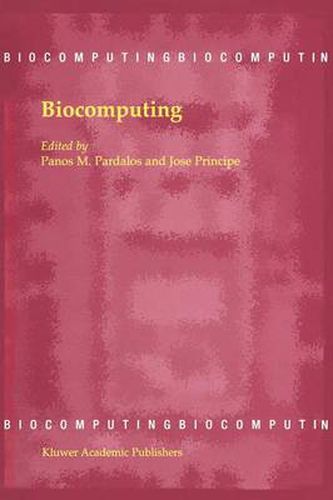Readings Newsletter
Become a Readings Member to make your shopping experience even easier.
Sign in or sign up for free!
You’re not far away from qualifying for FREE standard shipping within Australia
You’ve qualified for FREE standard shipping within Australia
The cart is loading…






This title is printed to order. This book may have been self-published. If so, we cannot guarantee the quality of the content. In the main most books will have gone through the editing process however some may not. We therefore suggest that you be aware of this before ordering this book. If in doubt check either the author or publisher’s details as we are unable to accept any returns unless they are faulty. Please contact us if you have any questions.
In the quest to understand and model the healthy or sick human body, re searchers and medical doctors are utilizing more and more quantitative tools and techniques. This trend is pushing the envelope of a new field we call Biomedical Computing, as an exciting frontier among signal processing, pattern recognition, optimization, nonlinear dynamics, computer science and biology, chemistry and medicine. A conference on Biocomputing was held during February 25-27, 2001 at the University of Florida. The conference was sponsored by the Center for Applied Optimization, the Computational Neuroengineering Center, the Biomedical En gineering Program (through a Whitaker Foundation grant), the Brain Institute, the School of Engineering, and the University of Florida Research & Graduate Programs. The conference provided a forum for researchers to discuss and present new directions in Biocomputing. The well-attended three days event was highlighted by the presence of top researchers in the field who presented their work in Biocomputing. This volume contains a selective collection of ref ereed papers based on talks presented at this conference. You will find seminal contributions in genomics, global optimization, computational neuroscience, FMRI, brain dynamics, epileptic seizure prediction and cancer diagnostics. We would like to take the opportunity to thank the sponsors, the authors of the papers, the anonymous referees, and Kluwer Academic Publishers for making the conference successful and the publication of this volume possible. Panos M. Pardalos and Jose C.
$9.00 standard shipping within Australia
FREE standard shipping within Australia for orders over $100.00
Express & International shipping calculated at checkout
This title is printed to order. This book may have been self-published. If so, we cannot guarantee the quality of the content. In the main most books will have gone through the editing process however some may not. We therefore suggest that you be aware of this before ordering this book. If in doubt check either the author or publisher’s details as we are unable to accept any returns unless they are faulty. Please contact us if you have any questions.
In the quest to understand and model the healthy or sick human body, re searchers and medical doctors are utilizing more and more quantitative tools and techniques. This trend is pushing the envelope of a new field we call Biomedical Computing, as an exciting frontier among signal processing, pattern recognition, optimization, nonlinear dynamics, computer science and biology, chemistry and medicine. A conference on Biocomputing was held during February 25-27, 2001 at the University of Florida. The conference was sponsored by the Center for Applied Optimization, the Computational Neuroengineering Center, the Biomedical En gineering Program (through a Whitaker Foundation grant), the Brain Institute, the School of Engineering, and the University of Florida Research & Graduate Programs. The conference provided a forum for researchers to discuss and present new directions in Biocomputing. The well-attended three days event was highlighted by the presence of top researchers in the field who presented their work in Biocomputing. This volume contains a selective collection of ref ereed papers based on talks presented at this conference. You will find seminal contributions in genomics, global optimization, computational neuroscience, FMRI, brain dynamics, epileptic seizure prediction and cancer diagnostics. We would like to take the opportunity to thank the sponsors, the authors of the papers, the anonymous referees, and Kluwer Academic Publishers for making the conference successful and the publication of this volume possible. Panos M. Pardalos and Jose C.